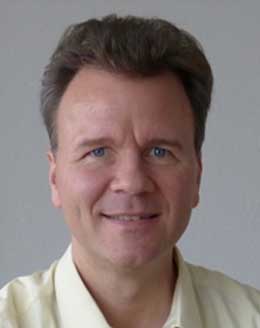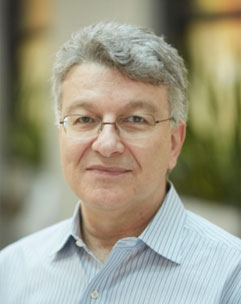COVID-19
COVID-19
Tuesday, June 14, 10:30-13:30 (GMT+8)
The pandemic of
COVID-19 has illuminated the importance of airborne transmission in spreading
the respiratory viruses at both short and long ranges. AAC 2022 will hold a
special symposium focused on COVID-19 with emphasis on the role and scientific
basis of airborne transmission of virus-laden aerosols in spreading respiratory
viral diseases, the evidence of airborne transmission learned from COVID-19,
and effective precautionary measures that need to be implemented to reduce
airborne transmission of viruses.
Aerosol Science Informs Transmission of COVID-19 and Other Respiratory Infections
Linsey Chen MARR
Virginia Tech, USA
Abstract
The COVID-19 pandemic has revealed devastating limitations in traditional understanding of how respiratory viruses are transmitted. Despite initial assurances that the SARS-CoV-2 virus was not airborne, it is now clear that the virus is transmitted through the air in microscopic aerosol particles. The same concepts and tools used to understand particulate air pollution can also be applied to viruses in the air. Physically, they are subject to the same transport and removal mechanisms as are airborne particles, and we can apply fundamental principles about particle behavior to understand the dynamics of virus in the air. Evaporation of respiratory droplets leads to shrinkage and changes in chemical composition that may affect virus viability. Increased salt and protein concentrations, altered pH, crystallization, or phase separation could promote inactivation of the virus. Airborne transmission of COVID-19, influenza, and other respiratory infections, at both close and farther distances, is more important than previously thought. Understanding the fundamental science underlying airborne transmission is essential for improving the forecasting of disease dynamics, developing infection control strategies, and predicting the pandemic potential of emerging pathogens.
-
About the author
Dr. Linsey Chen MARR is the Charles P. Lunsford Professor of Civil and Environmental Engineering at Virginia Tech. Her research group applies an interdisciplinary approach to study pollutants in indoor and outdoor air. Prior to the pandemic, she was one of a small number of scientists who studied viruses in the air. She has worked with the US Centers for Disease Control and US National Academies of Sciences, Engineering, and Medicine to update conventional wisdom about virus transmission and recommend guidelines for protecting public health. She has been interviewed hundreds of times and contributed op-eds to The New York Times and The Washington Post about transmission of COVID-19. Dr. Marr has published over 140 papers and is a Fellow of the American Association for Aerosol Research and of the International Society of Indoor Air Quality and Climate. She received a B.S. in Engineering Science from Harvard College and a Ph.D. in Civil and Environmental Engineering from the University of California at Berkeley, and she completed her post-doctoral training in Earth, Atmospheric, and Planetary Sciences at the Massachusetts Institute of Technology.

Experiments and Modelling Suggest Low Risk of COVID-19 Transmission During Outdoor Running Races and Athletic Events
Michael RIEDIKER
Swiss Centre for Occupational and Environmental Health, Switzerland
Abstract
Outdoor contacts seem to rarely result in transmission of the severe acute respiratory syndrome coronavirus 2 (SARS-CoV-2). However, little is known about the transmission during popular outdoor running events. This study assessed the transfer of aerosols between runners at such events and how the starting regime influences the transmission risk.
-
About the author
None

Assessing Exposures and Health Effects of Particle Radioactivity: An Emerging Research Field
Petros KOUTRAKIS
Harvard University, USA
Abstract
The recent Global Burden of Disease (GBD) study estimated that long-term exposure to fine particulates (PM2.5) caused 9 million deaths worldwide in 2019, making it the fourth-ranked global risk factor for that year. The PM properties responsible for its toxicity are still not fully understood. Recently, we found that radon (Rn) exposure is associated with mortality in the Northeastern U.S., and we have reported associations between PM gross β-activity and blood pressure, oxidative stress, and lung and cardiac function. A large fraction of the total exposure to naturally occurring ionizing radiation is through inhalation of ambient particles carrying attached radionuclides. The primary source of this PM radioactivity (PR) is Radon (Rn) gas through its decay products. Rn emanates from the soil and enters the atmosphere, including indoor air, where it decays. The resulting radionuclides attach to inhalable PM, which deposit in the lungs and continue to release ionizing radiation (α-, β- and γ-radiation) causing pulmonary inflammation and oxidative stress. To date, most previous environmental radiation studies have focused on the cancer effects of Rn progeny, As a consequence, there are significant knowledge gaps regarding the non-cancer effects of radon and PR. Our recent research has demonstrated that these non-cancer effects are, in fact, very important. Specifically, we have generated new information showing that exposures to Rn as well as PM gross α-, β- and γ-activities are associated with numerous adverse health outcomes, including blood pressure, oxidative stress, cardiac, lung and liver function, gestational diabetes and hypertension, and total and cardiopulmonary mortality.
These observations provide strong scientific evidence for our hypothesis that inhaled Rn progeny and other radionuclides, measured as PR, can have direct health effects through stimulation of inflammatory and oxidative processes. Therefore, assessing exposures and effects of PR may be of paramount importance to understanding of particle toxicity. During my presentations I will summarize many PR studies regarding measurement methods, sources, relationships between indoor and outdoor levels and, toxicity assays. Also, I will present results from cohort studies examining a large spectrum of health outcomes and population mortality studies. Finally, I will discuss research needs to advance this emerging research area.
-
About the author
None

Airborne Transmission of Respiratory Viruses and Necessity of Paradigm Shift to Mitigate COVID-19
Chia C. WANG
National Sun Yat-sen University, Taiwan
Abstract
The importance of airborne transmission of virus-laden aerosols, a long underappreciated transmission mode, has been illuminated during the pandemic of COVID-19. The current disease control and prevention paradigm, mainly designed for limiting droplets and fomites, fail to account for the recurring superspreading events and cannot provide full protection against airborne transmission. A detailed assessment of respiratory viruses shows that, besides SARS-CoV-2, most common respiratory viruses, including SARS-CoV, MERS-CoV, influenza, measles, and the rhinoviruses can all spread via airborne transmission. In contrast to droplets, aerosols (smaller than 100 µm) can suspend in the air for a longer period of time, travel beyond the current physical distancing of 1-2 m, and penetrate deep into the lower respiratory tract. From what we have learnt about airborne transmission of COVID-19 and other respiratory viral diseases, it is necessary for a paradigm shift by revising the conventional paradigms and implementing aerosol precaution measures at both short and long range to protect the public against airborne transmission. Implementing universal masking with proper mask material and good fit, emphasizing ventilation and airflows, adding air filtration with HEPA purifiers and UV disinfection, are crucial strategies in mitigating the risk of airborne transmission, ending the current pandemic, and assuring a satisfactory air quality that is free of pathogen.
-
About the author
Dr. Chia C. Wang received her Ph.D degree in Chemistry at University of California, Berkeley, and is currently the associate professor of Department of Chemistry and the director of Aerosol Science Research Center at National Sun Yat-sen University. Dr. Wang is an aerosol physical chemist and her research involves: (1) developing novel aerosol characterization techniques and instrument to advance the fundamental physicochemical properties of bioaerosols and aqueous aerosols, (2) aerosols and their impacts to the atmospheric, oceanic chemistry and environmental ecosystem, (3) health effects of aerosols and biomedical implications of aerosol inhalation therapy, and (4) formation, regulation and removal of anthropogenic aerosols. Dr. Wang’s research also involves the studies of structure-function correlation of hemoglobin and hemoglobin-disorder induced hemoglobinopathies, from which she has developed new therapeutic strategies to treat Hb oxygen-transport defect and hypoxia related diseases, including chronic obstructive pulmonary diseases (COPD). Dr. Wang has taken the leading role in establishing the Aerosol Science Research Center (ASRC) of NSYSU, which was launched in May 2016 and is currently the first and only aerosol-focused research center in Asia. ASRC actively engages in promoting aerosol research in Taiwan and many other countries in Asia. Since the outbreak of COVID-19, Dr. Wang has dedicated much efforts into exploring the scientific basis of airborne transmission of virus-laden aerosols and effective aerosol precautionary measures to reduce the risk of airborne transmission of respiratory viruses.











